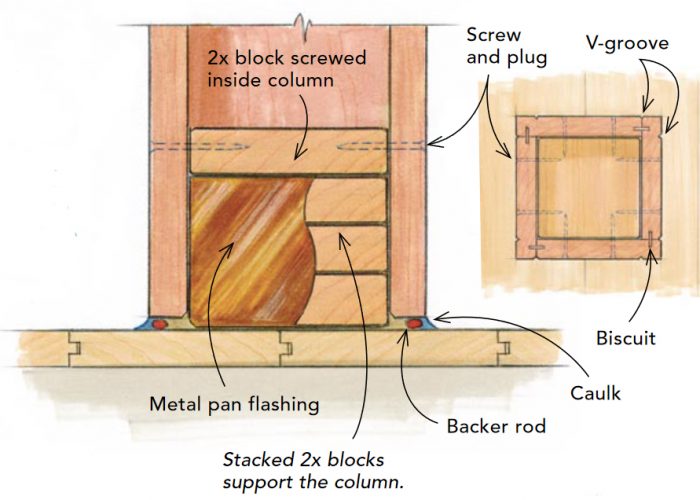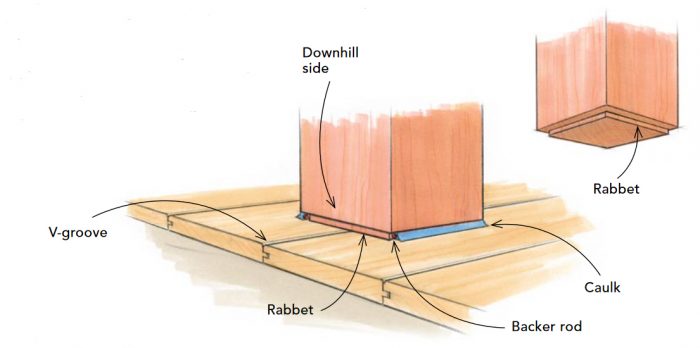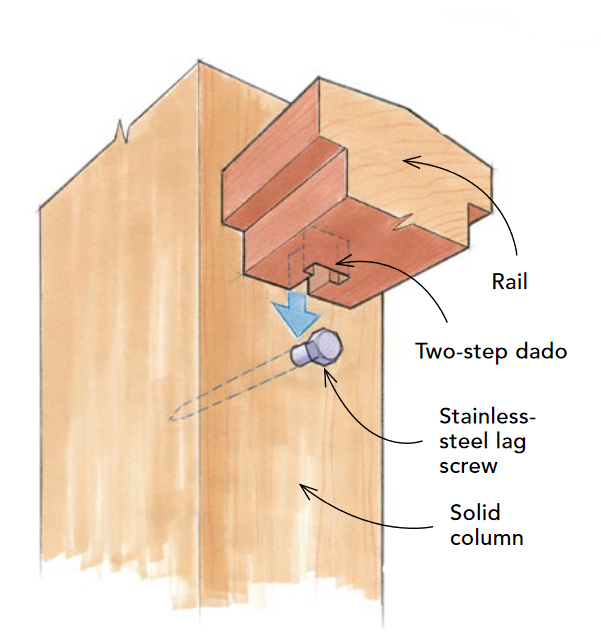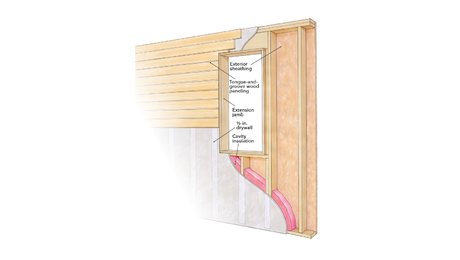How to Make Wooden Porch Posts Last
Control moisture and avoid rotting wood by providing a specific path for water to follow.

Whether solid or hollow, porch columns are highly susceptible to moisture damage. On a pitched floor, water can build up behind the column and eventually penetrate the end grain. Sealing the end grain with a high-quality primer is key, but providing a path for water to travel is an often-overlooked detail. When the porch design calls for a wide column, wrapping a structural post with 1x trim is a common practice. But building a hollow column that is both structural and aesthetic makes venting the post easier. On solid columns, rout drainage channels on post bottoms to provide a tunnel for moisture to travel through and to allow air movement. Cutting a shallow rabbet around the bottom and then filling it with caulk serves a similar purpose.
Stout and hollow
Butt joints create the most stable joint, especially when assembled with epoxy, biscuits, and screws. Restoration carpenter Mike Davis hides the joint with a V-groove followed by polyurethane caulk. He sets the column over a stack of 2xs set in metal pan flashing and bolted to the frame below. The column’s end grain is kept 1⁄4 in. off the floor by a 2x block screwed inside the column.

Wick-free base
Unprotected post bases can wick moisture up like a dry sponge. A rabbet cut around the post base provides a channel for backer rod and caulk. Seal the end grain with Primkote or an oil-based primer. Fill the uphill and sides with backer rod and polyurethane caulk. Leave the downhill side open to allow moisture to escape. A V-groove channels water away from the house.

Hang the top and bottom rail
Mike Davis devised a system that is sturdy and slick. He locks the top and bottom rail to a stainless-steel lag bolt left 1 in. proud of the column. Using a plunge router and jigs, he routs two slots in the bottom of each rail: one for the lag bolt’s shank, the other for its head. The railing slips over the lags. He leaves a 1⁄4-in. gap between the rail and the column. Using backer rod and polyurethane caulk, he seals the top and sides of the rail-to-column joint. The bottom again remains open to allow for drainage.

Check out The Rotproof Porch for more tips for building durable porches.
Drawings by Dan Thornton. Photo by Roe Osborn.
RELATED LINKS

























